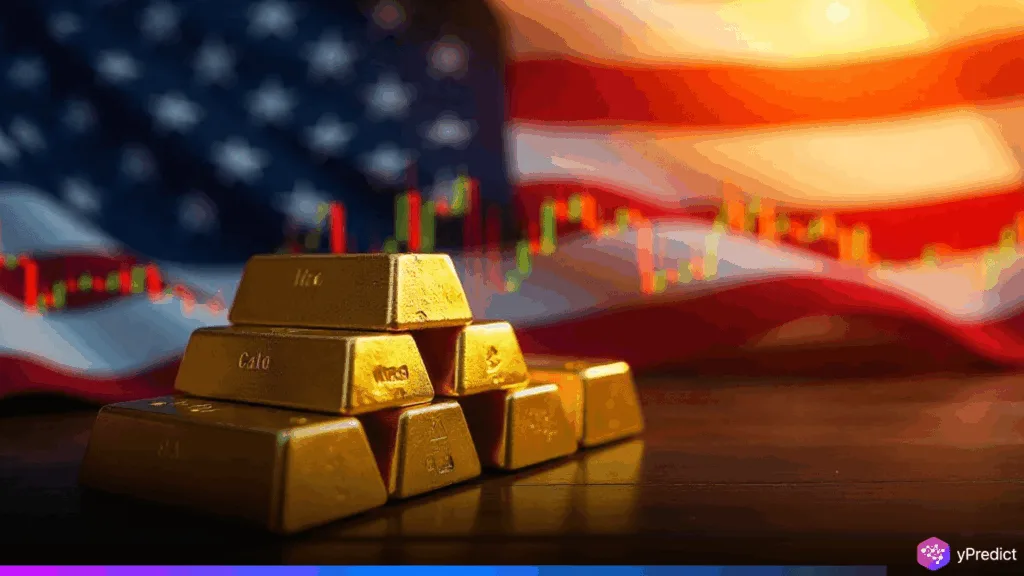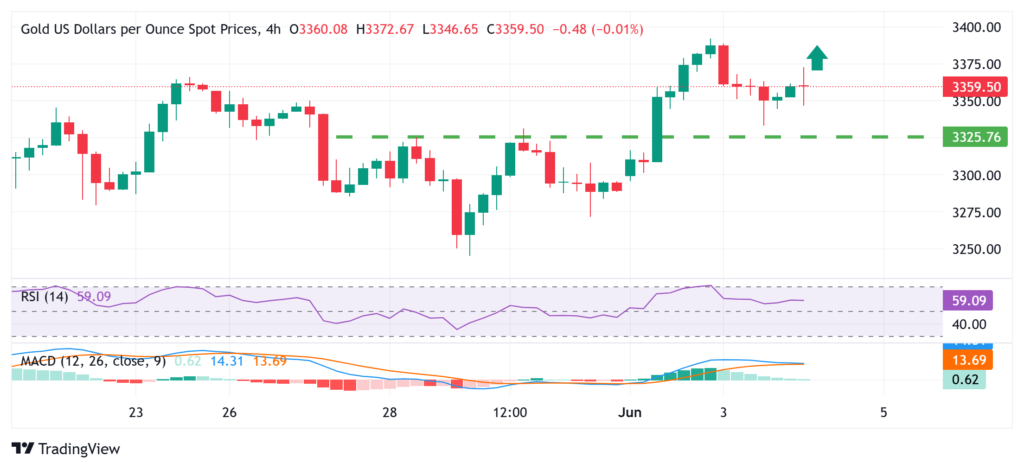
The gold rate (XAU/USD) remains firm near $3,350, holding close to a recent four-week high. Traders are being cautious ahead of a phone call between US President Donald Trump and Chinese President Xi Jinping. The Fed’s policy expectations, trade risk worries, and geopolitical tensions are the causes of the tense market conditions. Furthermore, the focus at the moment is on the FOMC speeches. The next factor that influences changes in the price of gold could be significant economic data.
Gold Moves Sideways Ahead of Trump-Xi Talks
Investors are still wary of the gold price while they await more information about the dynamics of international trade. The new steel and aluminum import tariff is in effect right now. As a result, there is still a demand for safe-haven assets like gold.
Meanwhile, the Job Openings and Labor Turnover Survey (JOLTS) results exceeded expectations, indicating a strong labor market. Despite this, concerns about Fed policy changes and falling US Treasury yields have restrained gains in the US dollar. Traders are therefore keeping a careful eye on whether this cautious optimism holds for the rest of 2017.
Can Economic Data Shift Gold Rate Direction?
Comments from several Federal Reserve officials have sent mixed signals. Atlanta Fed’s Raphael Bostic urged “patience” on rate cuts, warning inflation remains sticky. Chicago Fed’s Austan Goolsbee added that tariff effects may take time to reflect. However, Governor Lisa Cook expressed worries about the long-term inflation risks associated with trade risk. Her reference to the risk of stagflation increased pressure on Fed policy expectations.
Amidst this, markets anticipate a minimum of two rate reductions in 2025. This viewpoint maintains the US dollar’s weakness and provides the gold price with indirect support. Nevertheless, the metal finds it difficult to gain significant traction as the general risk appetite in stocks stays comparatively positive.
Future US data, such as the ISM Services PMI and ADP private payrolls, may offer short-term guidance. In contrast to weaker data, which could support Fed policy doves, strong numbers could strengthen the US dollar. The market’s interpretation will determine whether either result opens up new volatility for the gold price.
Gold Rate Charts Signal Possible Fresh Breakout
Technically speaking, the gold rate is bullish after maintaining its position above the $3,324–$3,326 breakout zone. On both hourly and daily charts, positive momentum indicators imply that the path of least resistance is still rising. On slight declines, buyers are entering the market, suggesting underlying strength.

However, a decisive move above $3,380 and the psychological $3,400 level is required to allow for a retest of April’s all-time highs. If that level is cleared, a push toward the $3,500 mark becomes possible. Conversely, a break below $3,355 could spark fresh selling toward $3,300, though dip-buying interest may keep losses contained.
What’s Next for Gold Rate Movement?
The gold rate is still backed by cautious optimism and risk-averse positioning in spite of conflicting signals. The metal may keep consolidating until Fed policy changes or US-China updates provide a clearer path. For the time being, gold traders are balancing quiet US dollar movements with headlines that highlight trade risk. Thus, as the market awaits the next macro trigger, the gold price may be revived by impending jobs data or speeches from the central bank.







